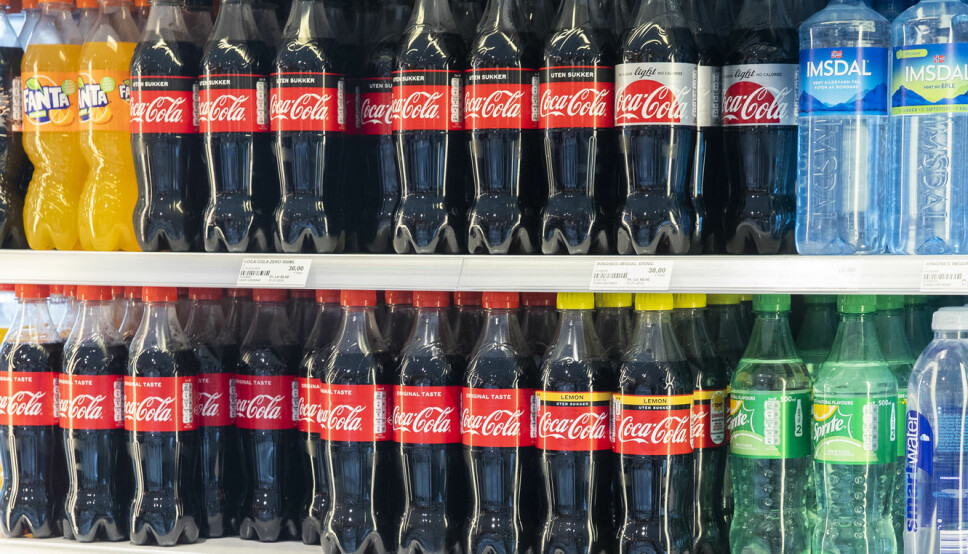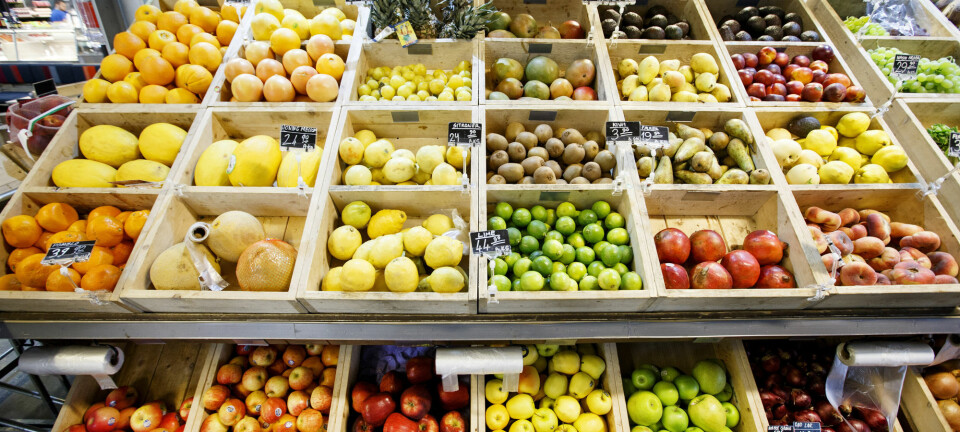
Cheaper diet soda weakened sales of sugary soda
People choose diet soda over soda with sugar more often if the price is lower and diet soda is the most accessible, according to a new study. Marketing professor says stores will keep putting products with the highest profit margins in the best locations.
Excessive sugar intake not only increases the risk of cavities, but also the risk of gaining weight. This can in turn increase the risk of type 2 diabetes and cardiovascular disease.
Even so, one in four Norwegians consumes too much sugar.
The majority of the population wants to eat healthy, but many people find that difficult to put into practice, according to a survey by Consumption Research Norway (SIFO).
Habits and impulses largely influence what foods we buy.
Researcher Samira Lekhal and PhD candidate Helena Slapø wanted to investigate whether the so-called "nudge theory" can help us make healthier choices when we shop.
Nudging can involve relocating products or changing the price in order to take advantage of shoppers’ tendency to make impulse purchases.
The researchers measured how the stores' relocating of soft drinks with and without sugar worked over time.

The study shows that lowering the price of soft drinks changes our shopping habits a bit, if regular soda at the same time is harder to find.
Easily accessible, lower price
Lekhal is chief physician at the Morbid Obesity Centre in southern and eastern Norway. She and Slapø at OsloMet collaborated with the Norwegian grocery wholesaling group NorgesGruppen to do the study.
We already know, for example, that meat that is on sale influences customers to buy more meat.
The researchers believe that grocery stores are well suited to influence the population to make healthier food choices.
NorgesGruppen agreed to stock diet soft drinks differently, as well as to lower their price. Over a thousand stores participated.
The stores moved the diet soda to be the first option in the store, within easy reach and at the front of coolers, says Lekhal.
Soda price lowered by 12 per cent
Then the price of sugar-free sodas like Cola Zero and Pepsi Max was lowered in April 2018, but only in one of the store chains.
The price reduction averaged 12 per cent on various packages.

The experiment lasted from 2015 to 2018. The researchers used the sales figures to analyse how the stocking of the soda products changed purchases.
They looked at how much soda of each variety was sold, as well as at the share of sales for diet soda and regular soda, before and after the changes.
Before the price cut, customers bought 47 per cent diet soda, the rest regular soda. After the price cut, the share of diet soft drinks increased to almost 60 per cent.
Part of a trend?
Ellen Katrine Nyhus, a professor of marketing at the University of Agder, is of the opinion that the study reveals little new information.
“It’s nothing new that lower relative prices of a product lead to increased sales of that product, and that you can influence demand through how a product is placed in the store,” she says.
If you make an item more easily accessible, sales go up, while sales go down if the item is difficult to access. These are strategies that are diligently used by marketers, so these findings aren’t that surprising, she believes.
Nyhus also notes the fact that the results from the study could just as well indicate a trend.
“It would have been helpful if the figures from Norgesgruppen had been compared with figures from other chains throughout the observation period, to ensure that the changes in consumption patterns were due to changes in price and location and not just part of a trend,” she says.
Products with best profit margin placed advantageously
Nyhus thinks it’s a positive thing if you can use simple means to change habits so that we make healthier shopping choices.
“But whether stores will be interested in doing this without an order from the authorities is the question,” she says.
“Chain stores are concerned with maximizing their profits, so naturally the products that yield the greatest profit margins are prioritized for optimal placement in the stores,” Nyhus says.
She points out that ideally, healthy food and drink would generate the most profit for the stores, because then the probability is higher that these products would nudge people towards healthier choices.
One in four people consumes too much sugar
The Norwegian Directorate of Health recommends that the daily intake of sugar not exceed 10 per cent of a person’s total energy intake.
About 25 per cent of Norwegians consume more sugar than recommended. Juices and soft drinks make up a third of the sugar intake.
For adults, sugar-sweetened soda is the biggest source of sugar. For children, soda is the second largest source of sugar.
Replacing sugary soft drinks with diet soda would thus have a big effect.
The Norwegian Directorate of Health wants people to limit their intake of sugar and does not recommend soft drinks on a daily basis. But if the desire overwhelms you, the experts recommend choosing a sugar-free variant.
Regular sodas make up 17 per cent of the drinks Norwegians buy.
Translated by: Ingrid P. Nuse
Reference:
S. Lekhal, H. Slapø: Dagligvarebutikken som arena for bedre folkehelse (The grocery store as an arena for better public health). Norwegian Journal of Nutrition, No. 2/2020 (in Norwegian).
———
Read the Norwegian version of this article on forskning.no
































